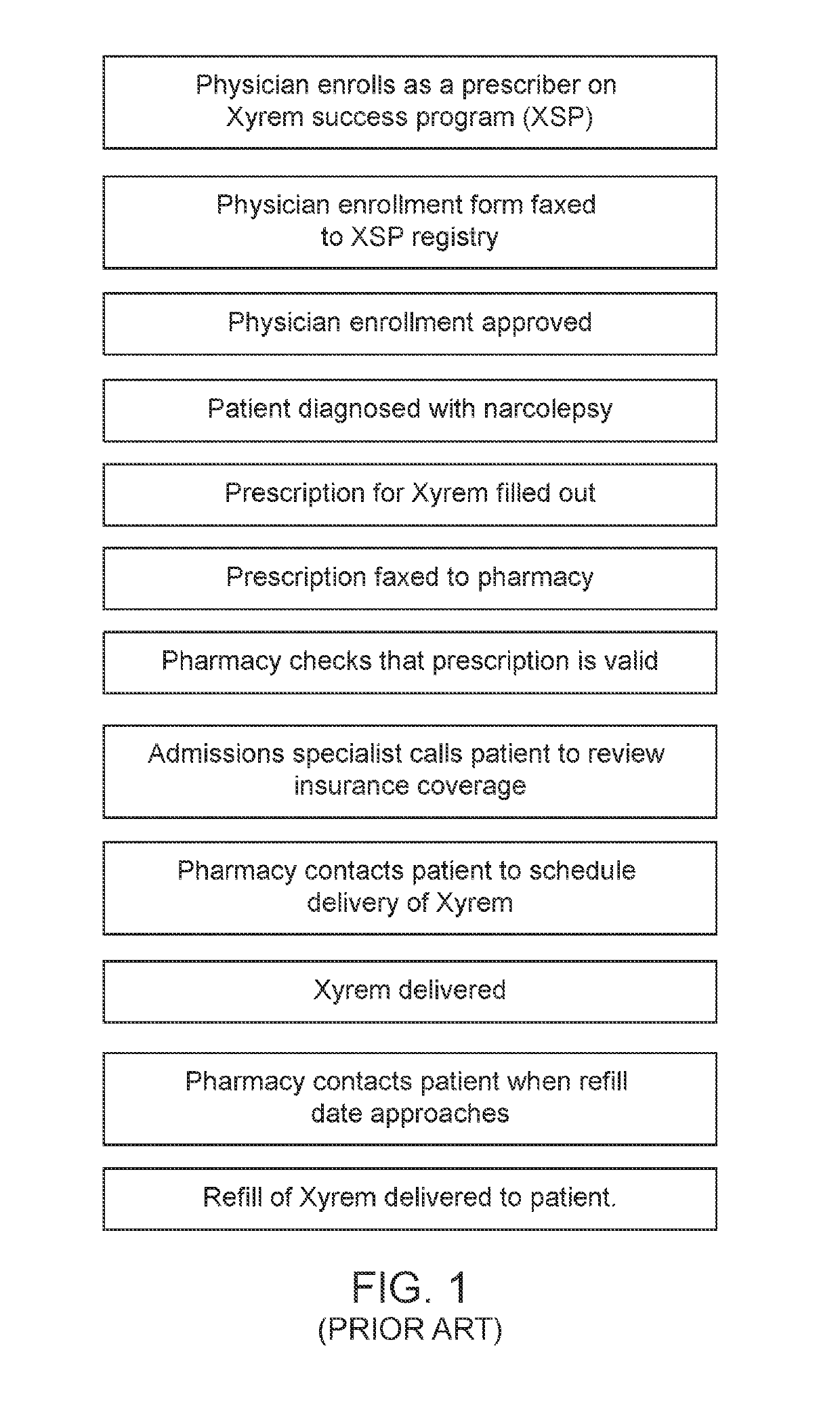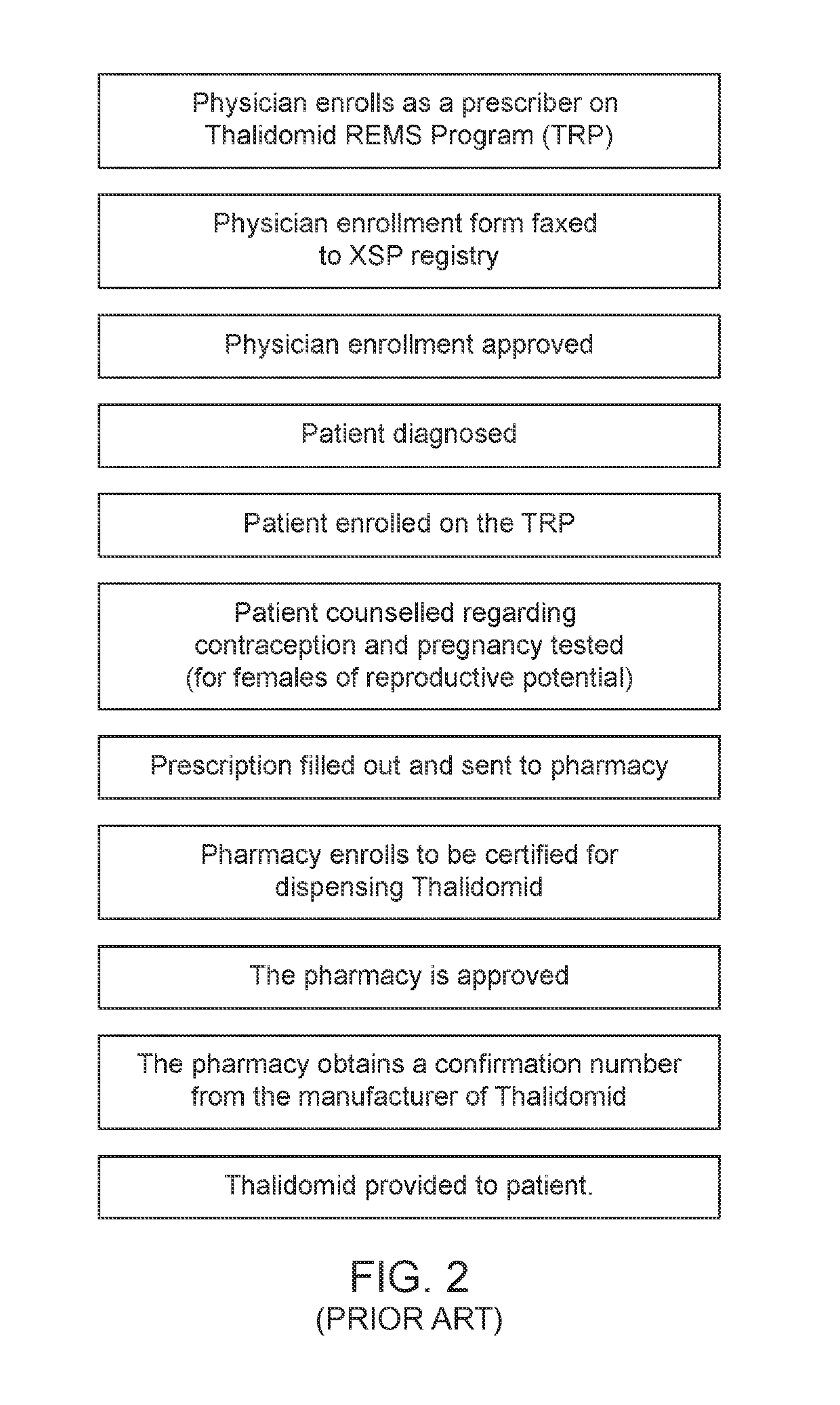Control system for control of distribution of medication
a technology of control system and medication, applied in mental health, instruments, healthcare resources and facilities, etc., can solve the problems of poor development of language and motor skills, patients are at risk of numerous associated conditions including orthopedic developmental problems, and children with dravet syndrome are likely to experience multiple seizures per day, so as to improve the understanding of one or more drugs
- Summary
- Abstract
- Description
- Claims
- Application Information
AI Technical Summary
Benefits of technology
Problems solved by technology
Method used
Image
Examples
embodiments
[0112]Aspects of the present disclosure include a system for controlling distribution of a medication in the treatment or prevention of epilepsy. In some embodiments, the system comprises: a data storage facility including a database of patient records, each patient record having a medication authorization field; a central controller having one or more processors coupled to a communication network, which controls transmission and receipt of data via the network and which is coupled to the data storage facility to read and write data to the data storage facility; wherein the central controller outputs via the network an authorization of a first prescription of epilepsy medication to a patient in dependence upon genetic test results for the patient and schedules one or more subsequent test for the patient prior to authorization of one or more subsequent prescriptions of epilepsy medication.
[0113]In certain embodiments, the system further comprises a drug storage facility having at lea...
PUM
 Login to View More
Login to View More Abstract
Description
Claims
Application Information
 Login to View More
Login to View More - R&D
- Intellectual Property
- Life Sciences
- Materials
- Tech Scout
- Unparalleled Data Quality
- Higher Quality Content
- 60% Fewer Hallucinations
Browse by: Latest US Patents, China's latest patents, Technical Efficacy Thesaurus, Application Domain, Technology Topic, Popular Technical Reports.
© 2025 PatSnap. All rights reserved.Legal|Privacy policy|Modern Slavery Act Transparency Statement|Sitemap|About US| Contact US: help@patsnap.com



